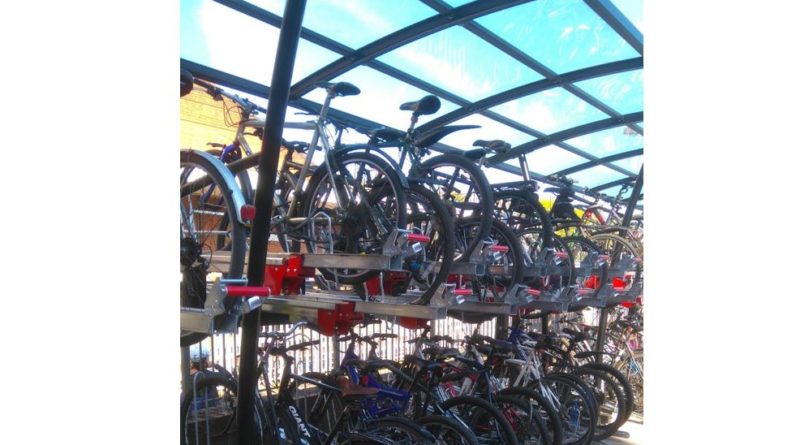Government announces £6.8 million for 2,300 new cycle spaces at rail stations
The Cycle Rail programme fund has been topped up with £6.8 m for use on 2,300 extra cycle spaces at 48 stations.
Total investment in the Cycle Rail programme now exceeds £40 million (via the DfT) and this latest cash comes as Bike Week comes to a close – and a week after the government renewed its commitment to cycle to work by confirming bikes in excess of £1,000 can be acquired through the scheme.
Cycle-rail journeys have been one of the big cycle successes of the last decade-plus. While the UK famously has a cycle market focused on the ‘sport/leisure’ categories, the number of Brits riding to the nation’s rail stations as part of their regular commute has tangibly increased.
While recent figures appear slightly harder to come by, cycle-rail journeys grew 50% between 2010 and 2016, to 50 million. The number of cycle-rail journeys, where a bike is parked at a station, increased 70% between 2010 and 2016.
Cycle spaces at rail stations have grown significantly too, from 25,000 in 2010 to more than 80,000 at more than 500 stations. That’s included integrated cycle hubs at key stations like Hove, where a cycle hub includes secure key card access, CCTV, cycle maintenance, hire and a repair business (surely providing some ideas for cycle retailers located close to rail stations).
Some rail operators have a better reputation for cycle-friendliness than others – last year ScotRail added a dedicated carriage just for bikes on certain routes and times.
Cycling and Walking Minister Michael Ellis: “Cycling to your nearest station and catching a train to work is a great way to keep healthy, reduce emissions and help make our towns and cities vibrant places to live. But to make this a reality, I know that the right infrastructure needs to be in place. This latest investment will see many more stations become accessible for cyclists, so that greener travel options – whether as part of a longer or shorter journey – become the norm.”
Xavier Brice, CEO for Sustrans, the walking and cycling charity, said: “Walking and cycling should be the easiest way for everyone to get to their local station, making our towns and cities better places to live by reducing congestion and air pollution, and improving our physical and mental health. But it’s not always easy. Train operators and their partners have come up with a range of schemes that will make it easier for people to get to and from their station under their own power, which we hope will encourage more people to choose cycling and walking as part of their everyday journey.”
Phillip Darnton, Chair of the Cycle Rail Working Group, said: “This latest, most welcome grant to the Cycle Rail Working Group continues the Department for Transport’s successful funding programme which, over the last 5 years, has directly led to the number of trips to and from stations by bike more than doubling. This cost-effective investment really does work.”



